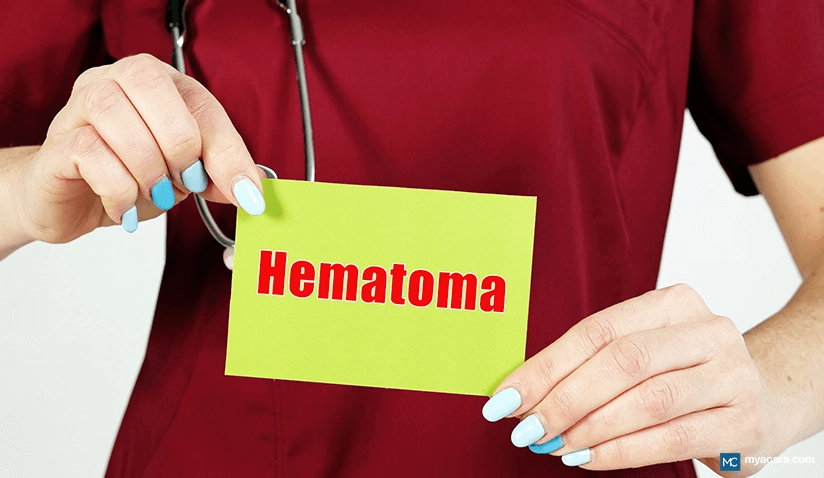Renal Scan: Types, Uses, Latest Research and More

Medically Reviewed by Dr. Sony Sherpa, (MBBS) - September 02, 2024
A renal scan is a diagnostic imaging test that utilizes a tracer injection containing a small amount of radioactive material to produce images of the kidneys. It is a non-invasive tool that assists healthcare professionals with assessing the function of the kidneys, including their structure and how well they filter blood or urine. Other names for renal scans include renal perfusion scans, renal scintigraphy, and nuclear renal scans.
This article reviews the primary renal scans, their uses, and how to prepare for the procedure.
When is a Kidney Scan Required?
Renal scans assess the function and health of the kidney and aid in diagnosing various kidney problems and diseases. A doctor may order a renal scan after performing a blood test or an x-ray when a kidney issue is suspected. A renal scan is an alternative to an X-ray for patients allergic to contrast dye.
Kidney scans can detect:
- Blockages in the urinary tract
- Kidney infections
- Kidney tumors
- Kidney scarring
- Congenital abnormalities of the kidneys
- Problems with blood flow to the kidneys
- Kidney filtration issues
These parameters can help specialists plan treatments, monitor their efficacy, and keep track of a patient's condition. It is especially crucial to use renal scans when checking on the viability and function of a transplanted kidney when evaluating kidney function while treating kidney diseases like glomerulonephritis or hydronephrosis, and during assessing and addressing potential kidney issues in pediatric patients.
Different Types of Renal Scans
There are two main types of renal scans: static and dynamic.
- Static Renal Scan: A static renal scan evaluates kidney structure and function by injecting a radioactive tracer and taking images over time to diagnose issues like blockages, infections, and tumors.
- Dynamic Renal Scan: Dynamic renal scan assesses kidney function by injecting a radioactive tracer and monitoring its movement through the kidneys in real-time. This is helpful when evaluating fluid movement through the kidneys and determining the filtration rate or the effects of medications.
Renal scans can evaluate the function of different parts of the kidneys, including the glomuleri and the renal cortex (renal cortical scintigraphy). They can assess the rate at which the kidney absorbs the tracer, revealing low and high-activity areas.
Some types test the movement of medications and their effects on the kidney, such as:
- ACE inhibitor renal scintigraphy assesses kidney function and ACE inhibitor effectiveness in patients with hypertension by imaging kidneys pre- and post-medication.
- Diuretic renal scintigraphy evaluates kidney function in patients with urinary tract obstruction by taking images before and after a diuretic medication to assess its impact on urine flow.
Radiologists and nephrologists will use different types of radioactive tracer materials in kidney scans to assess different kidney compartments and functions.
The three main types of renal scintigraphy based on tracer materials, or radiopharmaceuticals, include DMSA, MAG3, and DTPA.[1]
DMSA Scan
The DMSA scan, also known as dimercaptosuccinic acid scan, is a type of renal scan that evaluates the kidneys' structure.
Technetium-99m dimercaptosuccinic acid (Tc-99m DMSA) is the tracer used to assess kidney function. It primarily binds to renal tubular cells in the renal cortex, allowing for optimal cortical imaging.
Tc-99m DMSA has a long half-life of 6 hours in the kidneys, which exposes the kidneys to higher radiation compared to other agents. Most prefer MAG3 testing to a DMSA renal scan for cortical imaging due to lower radiation exposures. However, DMSA scans offer a higher-quality image and overall cortical assessment, making them more suitable for detecting finer anomalies and scarring.
DMSA renal scintigraphy can detect abnormalities in the kidneys' shape, size, or position. It can diagnose kidney problems, such as:
- Renal ectopia
- Scarring
- Infections
- Tumors
- Lesions or infarction
- Congenital abnormalities (used in children over five years old)
- Abscesses or cysts
MAG3 Scan
The MAG3 scan, also known as mercaptoacetyltriglycine scan or Tc-99m MAG3 scan, is a type of renal scan that evaluates kidney function using Technetium-99m mercaptoacetyl triglycine as a tracer material.
Tc-99m MAG3 is primarily handled by the proximal renal tubules, with a small portion filtered by the glomeruli. It is the best test for assessing kidney blood flow dynamics, the filtration rate, and the excretion of urine.[2]
This scan monitors kidney transplants and can diagnose kidney problems, such as urinary blockages, blood flow or filtration problems, infections, and tumors.
Although Tc-99m MAG3 offers limited evaluation of cortical anatomy compared to Tc-99m DMSA, it provides additional information about renal function. Its shorter half-life makes it more practical for functional assessment and safer, especially for children, as there is less radiation exposure.
DTPA Scan
The DTPA or rDTPA scan, also known as a diethylenetriamine pentaacetic acid scan, is another type of renal scan that evaluates the function of the kidneys.
Tc-99m DTPA is primarily cleared by glomerular filtration, making it useful for measuring glomerular filtration rate (GFR) and the excretion of urine. This is sometimes known as a 99mTc-GFR scan.
This scan can diagnose kidney problems such as blockages, infections, and tumors.
A DTPA scan has a shorter half-life than a DMSA scan yet a longer half-life than a MAG3 scan, offering an intermediate level of radiation exposure.
Other Types of Renal Scan
Renal scintigraphy alternatives include:
- CT scans (Computed Tomography)
- MRIs (Magnetic Resonance Imaging)
- PET/CT scan, which combines positron emission tomography (PET) and computed tomography (CT) to produce detailed images of the kidneys.
- Ultrasound
How Can I Prepare for the Scan?
To prepare for a renal scan, you need to consult your doctor. They will assess all your medications and supplements and explain which ones you must avoid before the scan. It is essential to clarify allergies to any medications or contrast dye, phobias (especially claustrophobia), or if you are pregnant or breastfeeding. The doctor will explain the necessary precautions for you to take or provide an alternative.[3]
Before your renal scan, your doctor may ask you to:
- Take plenty of hydrating fluids before the appointment to maintain optimal hydration
- Avoid caffeine and other stimulants before the scan
- Stop certain medications that may interfere with the results of the scan
- Fast for a certain amount of time before the scan, if necessary
It is necessary to follow the doctor’s instructions carefully for the best results.
What Happens During the Procedure?
The scan course hinges on the scan type. A renal scan may take anywhere from several minutes to an hour.
Renal scans are generally painless and do not involve any discomfort. However, some patients may experience mild discomfort from the injection of the tracer or from lying still for an extended period.
Tracer Injection: The first step of the procedure is injecting a small amount of radioactive tracer into the bloodstream. This tracer is usually a radioactive form of an endogenous substance, such as iodine or technetium. It takes 1 second to reach the kidneys from the injection site.
After the tracer injection, the patient lies down on a table that slides between two gamma cameras placed over and under the abdomen. The cameras do not emit radiation and are attached to a gantry. It will detect the radioactive tracer and send the information to a computer interface that produces images of the kidneys.[4]
Renal Perfusion: This is the next step and comprises the first portion of the assessment, which checks how well blood flows through the kidneys. It can take 5-6 seconds to see the kidneys on imaging devices after the tracer injection and 30-60 seconds to see optimal blood flow through the kidneys.
- To achieve a renal perfusion scan, a specialist takes pictures every 1 to 2 seconds for about a minute.
Parenchymal imaging: After completing renal perfusion, the dye enters the deeper compartments of the kidney, and the technique can assess the parenchyma's function, where filtration occurs. A camera produces images every 15-60 seconds.
- DTPA takes 3-5 minutes to assess the full parenchyma, and MAG3 takes 20-30 minutes. The time frame allows optimal radiotracer uptake, ensuring the best quality imaging possible.
Diuretic Renal Scintigraphy: Radiotracer activity appears in the bladder after 4-8 minutes. Doctors check the collecting system after getting the patient to walk around, sit upright for 5 minutes (gravity-assisted diuresis used for children), or take a diuretic 15-20 minutes after receiving the tracer. The timing helps to synchronize the diuretic renal scan with the tracer's clearance from the body to assess kidney and urinary function.
- If it takes the patient more than 20 minutes to clear the diuretic with a tracer, they have an obstruction. Some patients need a catheter if they have trouble emptying their bladder.
ACE Inhibition Renal Scintigraphy: During ACE Inhibitor renal scintigraphy, patients are given an ACE inhibitor after receiving the tracer. If the patient has hypertension or narrowed arteries leading to the kidney that interfere with kidney function, the body compensates by activating Angiotensin-Converting enzymes to promote blood vessel dilation.
- After ACE inhibitor intake, such patients show lower tracer uptake and filtration rates than healthy individuals.
Interpreting the Results
The scan results offer valuable insights into kidney function, such as:
- Revealing swollen regions, tumors, cysts, or damaged kidney areas.
- Showing how long it takes for blood or urine to move in and out of the kidney, as highlighted by the movement of the radiotracer over time.
The accuracy of the results depends on the tracer and scan technique used. The images are ready after the scan. A radiologist examines the images and sends a report to your doctor.
The scan results will help your doctor diagnose any kidney problems and determine the best course of treatment.
Safety and Risks
Renal scans are generally considered safe. Some people may feel a slight discomfort at the tracer injection site. The minimal radiation in the procedure does not pose a consequential health risk. In rare cases, some may suffer allergies or reactions to the tracer.
If you are pregnant or breastfeeding, you should inform your doctor before the scan.
Latest Research and Advancements
In recent years, there have been advancements in renal scan technology, including new tracers and imaging techniques.
Imaging Innovations
Integration of Artificial Intelligence (AI): The integration of artificial intelligence techniques has shown promising results in renal scan image analysis and interpretation. AI algorithms can assist in automating identifying abnormalities, improving accuracy, and reducing interpretation time.
A few developments that enable AI to achieve these outcomes include[5]:
- Segmenting images to identify and measure objects in an image, such as measuring the size and shape of kidneys in MRI images.
- Image feature extraction and pattern recognition to classify images or predict outcomes.
- Image reconstruction to improve the quality of blurry or noisy images, such as reconstructing MRI images of kidneys.
This technology can optimize renal scan diagnostics' efficiency and effectiveness.
Combination of Renal Scans with Other Imaging Modalities: Researchers have been exploring the integration of renal scans with other imaging modalities to achieve a more comprehensive evaluation of kidney health. By combining renal scans with techniques such as computed tomography (CT) or magnetic resonance imaging (MRI), healthcare professionals can better understand kidney structure, function, and potential abnormalities.
Exploration of PET Scans for Kidney Function Evaluation: Positron emission tomography (PET) scans have the potential to offer a more detailed evaluation of kidney function and metabolism. These scans can provide valuable insights into cellular-level activities and metabolic processes within the kidneys, allowing for a more comprehensive understanding of renal health and potential dysfunctions.
Radiotracer Developments
Development of New Radiopharmaceuticals/Radiotracers: Scientists have been developing new radiopharmaceuticals and radiotracers with improved imaging properties. These innovative agents allow for better visualization and characterization of kidney structures and functions, providing enhanced diagnostic capabilities.
A few benefits of some of the latest radiotracers include[6]:
- Radiotracers can measure multiple kidney functions, including the renal filtration rate and blood flow.
- New tracers allow for the evalution of multiple disease processes in all kidney areas, such as chronic inflammation, ACE II type 1 receptor activation, damaged mitochondria, and identification of renal growths.
- It helps to assess renal conditions like renovascular hypertension and kidney injury.
- PET scans provide a whole-body read-out and can assess kidney-organ interactions such as cardiorenal crosstalk and the effects on kidney of heart damage.
Development of Dual-Isotope Scans: Dual-isotope scans are currently being developed to provide more comprehensive information during renal imaging. By using multiple isotopes simultaneously, healthcare providers can obtain simultaneous data on various aspects of kidney function, enhancing diagnostic accuracy and enabling a more comprehensive assessment of kidney health.
Integrated Radiogenomics: Radiomics and radiogenomics are being used to develop new imaging-based biomarkers to help distinguish benign tumors from malignancies and predict outcomes for patients with renal cell carcinoma. Radiogenomics helps us understand how genes influence the way tumors appear on imaging tests. This information can then inform and refine new tests that can more accurately diagnose and predict the course of cancer.[7]
As advancements continue, there is growing interest in the potential application of renal scans in personalized medicine approaches to kidney disease management. Personalizing treatment plans based on the patient's unique profile, including renal scan results, can lead to more targeted and effective interventions, ultimately improving patient outcomes and quality of life.
Conclusion
Renal scans are an essential tool for diagnosing kidney problems and evaluating the function of the kidneys. There are several types of renal scans, each with its specific purpose. Following your doctor's instructions is essential to ensure accurate results. With the latest technological advancements, renal scans are becoming more precise and effective in diagnosing kidney problems. If you are experiencing any symptoms of kidney problems, consult your doctor to determine if a renal scan is necessary.
To search for the best Urology Doctors and Urology Healthcare Providers worldwide, please use the Mya Care search engine
To search for the best healthcare providers worldwide, please use the Mya Care search engine.
The Mya Care Editorial Team comprises medical doctors and qualified professionals with a background in healthcare, dedicated to delivering trustworthy, evidence-based health content.
Our team draws on authoritative sources, including systematic reviews published in top-tier medical journals, the latest academic and professional books by renowned experts, and official guidelines from authoritative global health organizations. This rigorous process ensures every article reflects current medical standards and is regularly updated to include the latest healthcare insights.

Dr. Sony Sherpa completed her MBBS at Guangzhou Medical University, China. She is a resident doctor, researcher, and medical writer who believes in the importance of accessible, quality healthcare for everyone. Her work in the healthcare field is focused on improving the well-being of individuals and communities, ensuring they receive the necessary care and support for a healthy and fulfilling life.
Sources:
Featured Blogs



